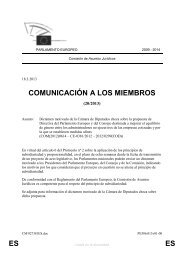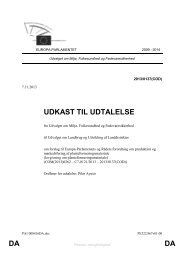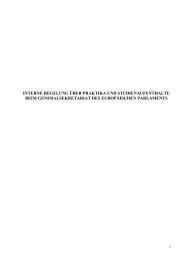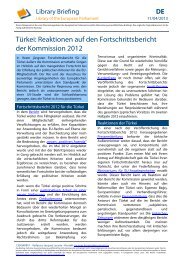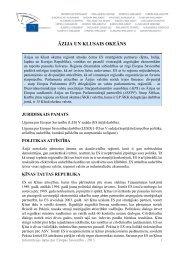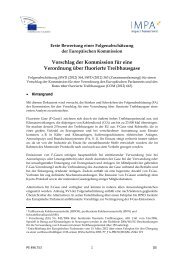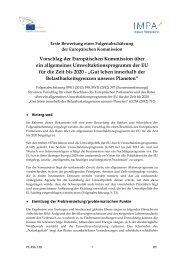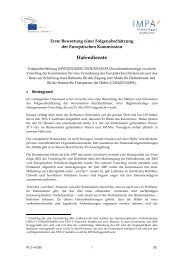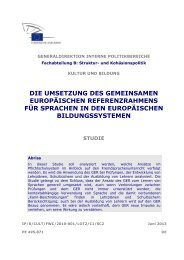Link to the study - European Parliament - Europa
Link to the study - European Parliament - Europa
Link to the study - European Parliament - Europa
Create successful ePaper yourself
Turn your PDF publications into a flip-book with our unique Google optimized e-Paper software.
Nuclear Decommissioning: Management of Costs and Risks<br />
____________________________________________________________________________________________<br />
Figure 8: Example contamination mechanisms of materials in contact with cooling water<br />
Source: Authors<br />
2.2.2. The need for decommissioning of nuclear reac<strong>to</strong>rs<br />
Reac<strong>to</strong>rs at <strong>the</strong> end of <strong>the</strong>ir operating time consist, in certain parts of <strong>the</strong> facility, of activated and<br />
contaminated materials, even after removal of <strong>the</strong> spent fuel. The removal of <strong>the</strong>se materials is<br />
necessary because:<br />
People who might come in<strong>to</strong> contact with contamination or come near <strong>to</strong> activated items or<br />
remove/re-use <strong>the</strong>m in an uncontrolled way can receive high radioactive doses (by direct<br />
radiation, by inhalation of aerosols or dust particles, etc.) and it is impossible <strong>to</strong> ensure that, over<br />
very long time periods of hundreds of years, no one enters <strong>the</strong> facility.<br />
Even if thoroughly enclosed (with concrete, door locks or by o<strong>the</strong>r means) ageing, corrosion and<br />
erosion over a very long period degrades buildings, reac<strong>to</strong>r internals and contaminated<br />
equipment with time. Over very long times of hundreds of years activated and contaminated<br />
material can thus leave <strong>the</strong> facility and could cause large doses in <strong>the</strong> vicinity.<br />
Any re-use of remaining buildings as well of <strong>the</strong> reac<strong>to</strong>r site as a whole would not be possible<br />
because of <strong>the</strong> necessary protection measures <strong>to</strong> prevent people from entering <strong>the</strong> facility.<br />
Like all facilities where dangerous materials are or were handled and where <strong>the</strong>se materials remain as<br />
items, liquids or as contamination on equipment or <strong>the</strong>ir surfaces, nuclear reac<strong>to</strong>rs have <strong>to</strong> be<br />
decommissioned, and <strong>the</strong> activated or contaminated materials completely removed and ei<strong>the</strong>r<br />
decontaminated or disposed under circumstances where <strong>the</strong> dangerous materials cannot re-enter<br />
<strong>the</strong> biosphere.<br />
AF-Colenco 2008 defines decommissioning:<br />
'Decommissioning [...] covers all of <strong>the</strong> administrative and technical actions associated with<br />
cessation of operation and withdrawal from service and it is <strong>the</strong> final phase in <strong>the</strong>ir lifecycle after<br />
siting, design, construction, commissioning and operation. The purpose of <strong>the</strong>se actions (activities<br />
39




